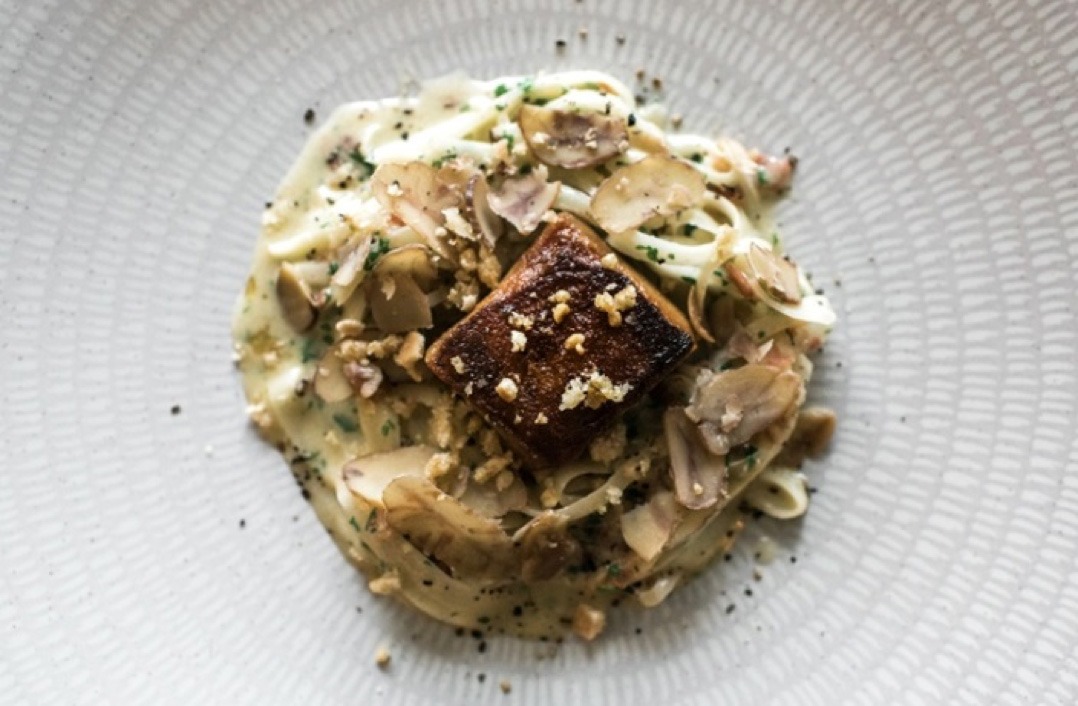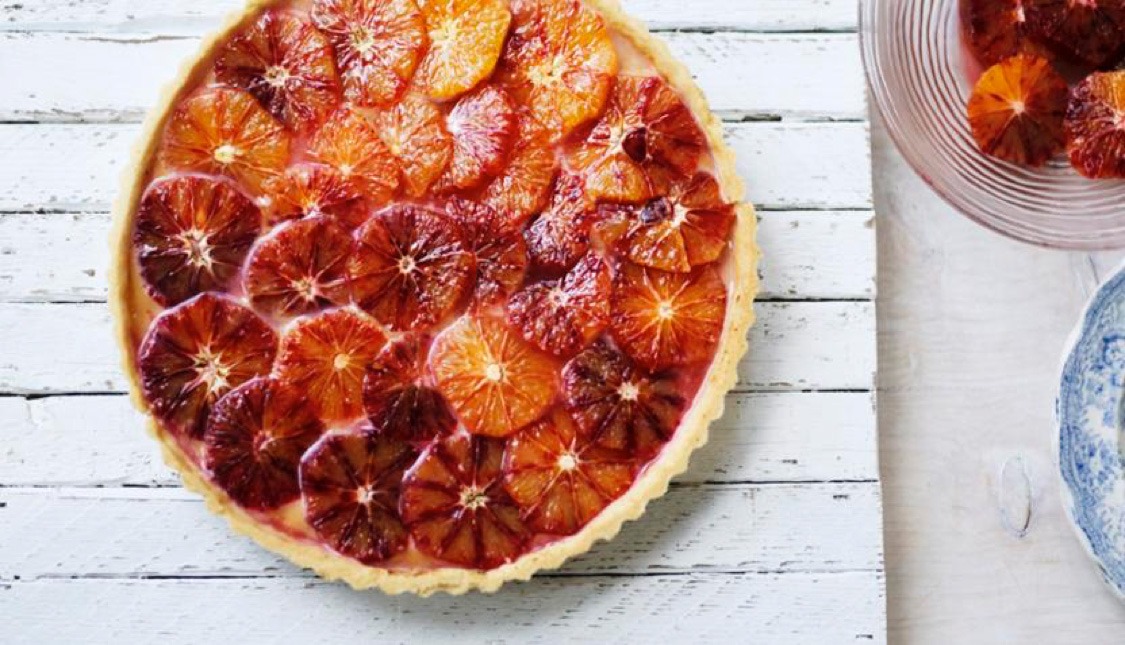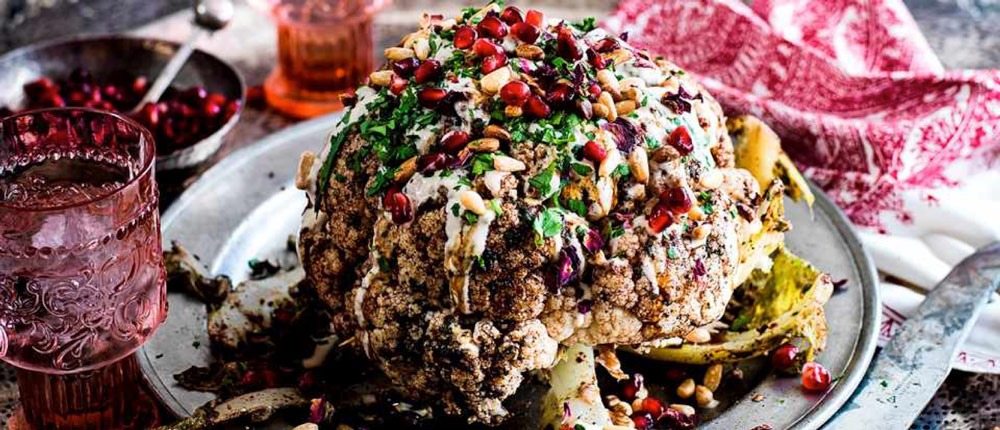Uncategorized
Tasty seasonal treats, to see you through the winter months
We love getting to know our customers. One of them is Consultant Chef, Robert Barker, of Tapas at the Manor, Nottinghamshire (www.tapasatthemanor.co.uk). Robert is an accomplished food writer and classically trained chef, who has worked at a number of Michelin Star restaurants.
After chatting to Robert when he popped into the mill for his fitting, we realised there are common threads that link what he does and what we do – an affinity with nature, and making the most of the best raw ingredients that nature provides. The seasons are a common theme too.
We thought it would be nice to share a few of Roberts tasty, seasonal recipes with you.
What’s in season in February
Vegetables
Beetroot, Chicory, Carrot, Cauliflower, Celeriac, White Cabbage, Savoy Cabbage, Brussel Sprouts, Chicory, Beet Tops, Turnip, Horseradish, Jerusalem, Artichoke, Kale, Kohlrabi, Parsley Root, Swede, Parsnips, Salsify
Fruits
Tangerine, Clementine, Grapefruit, Apple, Pear
Fish
Lemon Sole and other flat fish. Wild Salmon season begins.
Cheese
Farmhouse Cheddar, Blue Cheshire and Cotherstone.
4 seasonal recipes from Robert Barker
Satisfying flavoursome dinner –
Salsify carbonara with confit pork cheek, crackling and chestnuts

Ingredients:
Confit Pork
- 1 tsp black peppercorns
- 1 tsp cloves
- 1 tsp fennel seeds
- 1 tsp juniper berries
- 1 cardamom pod
- 1 cinnamon stick
- 1 star anise
- 250g of salt
- 2 tsp sugar
- 3 sprigs of fresh thyme, cut into 1cm lengths
- 3 sprigs of fresh rosemary, cut into 1cm lengths
- 2 garlic cloves, peeled
- 2 pork cheeks, weighing 250-300g each
- Duck fat
Crispy Pig Skins
- 1 pig skin, about 20cm square
- Salt
Carbonara Sauce
- 150g of pancetta, diced
- 75ml of white wine
- 450ml of single cream
- 75g of grated Parmesan
- Black pepper
- Milk, as needed
- 1 egg yolk, optional
Salsify
- 150ml of white wine
- 1 pinch of salt
- 1 lemon, juiced
- 8 batons of salsify, rinsed in cold water
To Serve
- 2 tsp chopped parsley
- 8 vacuum packed cooked chestnuts, finely sliced or shaved
- Fegetable oil, for frying
- Freshly ground black pepper
Method:
Step 1 – Begin by making a curing mix for the pork cheeks. Add all the spices to a dry frying pan and toast over a moderate heat for a few minutes until aromatic. Transfer the spices to a blender and blitz to a powder. Add the salt, sugar, thyme, rosemary and garlic and blitz again until thoroughly combined.
- 1 tsp black peppercorns
- 1 tsp cloves
- 1 tsp fennel seeds
- 1 tsp juniper berries
- 1 cardamom pod
- 1 cinnamon stick
- 1 star anise
- 250g of salt
- 2 tsp sugar
- 3 sprigs of fresh thyme, cut into 1cm lengths
- 3 sprigs of fresh rosemary, cut into 1cm lengths
- 2 garlic cloves, peeled
Step 2 – Sprinkle a thin, even layer of the curing mixture over a tray and lay the pork cheeks on top, making sure they are not touching each other. Sprinkle over more of the curing mixture, then cover the tray with cling film and leave to cure in the fridge for 24 hours.
- 2 pork cheeks, weighing 250-300g each
Step 3 – Preheat the oven to 130°C/gas mark 1/2. When the pork has finished curing, thoroughly rinse away the curing mixture from the cheeks, pat dry and place the cheeks in a large baking dish. In a small pan over a low heat, melt enough duck fat to cover the cheeks completely and pour evenly over the cheeks. Place in the oven and cook for approximately 2 hours, until soft and tender. Remove from the oven and leave to stand for 30 minutes in the fat.
- Duck fat
Step 4 – Lift the cheeks out of the fat and place on a tray lined with greaseproof paper. Cover with a second piece of paper then top with a flat tray weighed down with something heavy to press the cheeks flat as they cool. Once completely cold, remove the weights and paper and cut into 4 squares. Chill until ready to serve.
Meanwhile, trim any excess fat away from the pig skin and lay out flat on a tray. Sprinkle over a little salt and leave for 20 minutes to draw out some of the moisture. Preheat the oven to 220°C/gas mark 7.
- 1 pig skin, about 20cm square
- Salt
Step 5 – Rinse the salt from the skin and dry thoroughly with kitchen paper. Place between 2 baking trays to keep flat and roast in the oven for 20 minutes, or until really crispy. Allow to cool slightly, transfer to a blender and blitz to coarse crumbs. Store in an airtight container until ready to serve.
Step 6 – To make the carbonara sauce, add the diced pancetta to a large pan and place over a gentle heat to allow the fat to render down slowly, which should take about 20 minutes. Add the wine, allow to reduce by half, then add the cream and bring to a simmer. Whisk in the cheese and pepper, adjusting the seasoning as needed. If the sauce is too thick, add a splash of milk. Set aside.
- 150g of pancetta, diced
- 75ml of white wine
- 450ml of single cream
- 75g of grated Parmesan
- Black pepper
- Milk, as needed
Step 7 – Heat a small frying pan with a dash of oil and add the cheeks, fat-side down, with a pan or weighted tray on top to keep them flat. Cook for 7–8 minutes then turn over, placing the weight back on top, and cook until golden
Meanwhile, prepare the salsify by half-filling a pan with cold water and adding the wine, salt and lemon juice. Peel the salsify then use the peeler to cut them into long ribbons, immediately adding to the pan to prevent discolouration. Place the pan over a high heat, bring to the boil and simmer for a couple of minutes until tender. Drain well.
- 150ml of white wine
- 1 pinch of salt
- 1 lemon, juiced
- 8 batons of salsify, rinsed in cold water
Step 8 – Reheat the carbonara sauce gently in a large pan. If using the egg yolk, whisk this in now, being careful not to have the heat too high as it will scramble. Add the salsify to the sauce with the chopped parsley and stir to combine.
- 1 egg yolk, optional
- 2 tsp chopped parsley
Step 9 – To serve, divide the salsify and sauce between serving bowls and top with a piece of pork cheek. Scatter over the sliced chestnuts and some of the pork crackling crumb. Season with some extra black pepper and serve immediately.
- 8 vacuum packed cooked chestnuts, finely sliced or shaved
- Freshly ground black pepper
Simple Dessert – Blood orange tart

Ingredients:
- 200g/7oz sugar, plus extra for dusting
- 3 blood oranges, juice and zest
- 1 tsp orange blossom water
- 2 free-range eggs, plus 6 yolks
- 200g/7oz butter, cubed
- 25cm/10in sweetened shortcrust pastry tart shell, blind baked (you can use ready-made)
For the topping:
- Blood oranges, peeled, sliced into rounds
- 1 tbsp demerara sugar
- Double cream or custard, to serve
Method:
Step 1 – Whisk the sugar, orange juice and zest, orange blossom water, eggs and egg yolks together in a bowl until well combined.
Step 2 – Add the butter and set over a pan over simmering water. (Do not let the base of the bowl touch the water.)
Step 3 – Cook for 15-20 minutes, stirring regularly, until the butter has melted and the mixture has thickened.
Step 4 – Pour the mixture into the cooked pastry case , cover with clingfilm (to prevent a skin forming) and set aside to cool.
Step 5 – Arrange the orange slices on the cooled tart and sprinkle over the demerara sugar.
Step 6 – Using a cooks’ blowtorch, heat the sugar until caramelised.
Step 7 – To serve, slice the tart and serve with double cream or custard.
Healthy Lunch Box –
Jerusalem artichokes, red onion, goat’s cheese and hazelnuts

Ingredients:
- 100g Jerusalem artichokes
- 2 tbsp. vegetable oil
- 1 red onion
- Sprig thyme
- 25g goat’s cheese
- 1 tbsp. hazelnuts, toasted
- Handful rocket
- Sea salt, cracked black pepper to season
- Squeeze lemon juice
Method:
Step 1 – Preheat oven to 220C. Wash the Jerusalem artichokes under cold running water. Slice each artichoke into thirds lengthways. Peel the onion and slice horizontally into 3 large rounds.
Step 2 – Roast the artichokes on a baking tray with the olive oil and thyme until golden brown (approximately 20 minutes). For the last 10 minutes of cooking add the onion rounds. Season well with sea salt and black pepper while cooking.
Step 3 – Roughly chop the hazelnuts. Assemble your salad by crumbling the goat’s cheese on top of the roasted vegetables. Finish with the hazelnuts, rocket and a squeeze of lemon juice.
Quick Supper –
Roast Cauliflower, pomegranate, tahini and pine nuts

Ingredients:
- Cauliflower 1 whole
- Tahini 80g
- Lemon juice 2 tbsp
- Garlic 1-2 cloves, crushed
- Sea salt flakes
- Pomegranate molasses 1 tbsp (thinned down with water)
- Pomegranate seeds 2 tbsp
- Pine nuts 1½ tbsp toasted
- Dried rose petals 1 tsp (optional)
- Flat-leaf parsley 1½ tbsp, finely chopped
Shawarma Spiced Butter:
- Unsalted butter 100g, softened to room temperature
- Lemon 1, juiced
- Garlic 1 clove, crushed
- Coriander 1½ tbsp
- Ground cinnamon 1 tbsp
- Sumac 1 tbsp
- Ground cumin 1½ tsp
- Ground allspice ½ tsp
- Nutmeg a pinch of grated
- Ground cardamom a pinch
Method:
Step 1 – Trim the outer cauliflower leaves, but don’t be afraid to leave some on – they taste good and look great when charred and crisped on a griddle plate.
Step 2 – Put the cauliflower in a large pot in enough salted water to cover it, and bring to the boil on a high heat. Once the water is boiling, turn the heat down to medium so it has a gentle roll, and continue to cook for approximately 5-8 minutes. The intention is to par-cook the cauliflower before finishing it on the Griddle Plate.. It should be removed from the water when it still has some resistance when pierced with a knife.
Step 3 – Whilst the cauliflower is cooking, whisk the tahini, lemon juice and garlic with ½ tbsp sea salt in a large bowl. Gradually add ice-cold water. At first the tahini will form a lumpy paste, but continue to add liquid and keep whisking until it turns into a smooth, silky sauce and reaches drizzling consistency.
Step 4 – Mix the ingredients for the shawarma-spiced butter together. Brush the cauliflower liberally all over with the butter, and where possible, try and get beneath the floret canopy to reach the inner sections of the cauliflower. Keep some of the butter for brushing at a later stage.
Step 5 – Prepare a Griddle plate for on your hob. When the Plate is searing hot,grill the cauliflower on direct heat until it blackens on its outer edges. Turn the cauliflower regularly so it colours all over. The aim is to char the cauliflower in parts. This lends not only flavour, but looks great. Throughout the cooking processes, continue to brush with any leftover butter.
Step 6 – Once the cauliflower is cooked through and charred, remove from the heat and transfer to a plate. Spoon over the tahini sauce and pomegranate molasses, and finish the dish by sprinkling the pomegranate seeds, pine nuts, rose petals and chopped parsley over the top.An additional drizzle of olive oil adds a nice glossy finish.

Robert Barker, Consultant Chef
